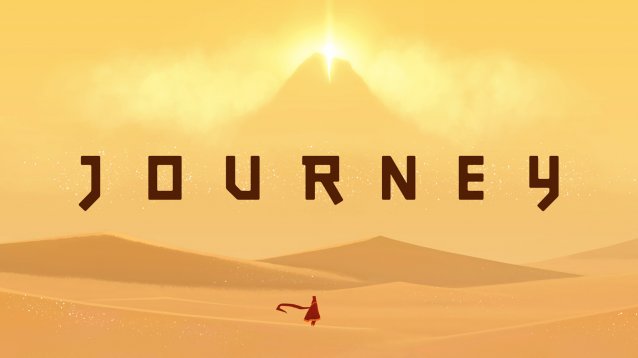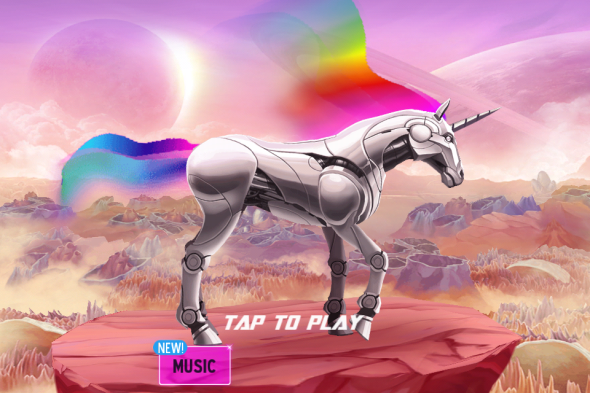

Pac-Man and Galaga Dimensions feature two highly recognizable gaming legends prominently on the front cover, but the new games inside feel nothing like the classics you know. It’s almost like a bait and switch of gaming, but it’s forgivable. Not only are the Dimensions games fairly entertaining with novel uses of 3DS technology, but the classics in their original and updated forms are available, too.
Technically, Pac-Man and Galaga Dimensions is actually a collection of five games. The original Pac-Man and Galaga, the updated Pac-Man Championship Edition and Galaga Legions and the 3DS exclusives Pac-Man Tilt and Galaga 3D Impact. There is also a well-animated 3D short film that explains the backstory of Pac-Man. Apparently, there was an ancient war that created an entire population of angry ghosts, and it’s Pac-Man’s destiny to eat them. It’s oddly hilarious in its sometimes serious tone, and definitely worth watching.
Pac-Man Tilt and Galaga 3D Impact are the main draw of the game since they’re the new titles in the package. Pac-Man Tilt is the more interesting of the two games, and is really the highlight of the whole collection.
There are 25 levels of standard 2D platforming with a few additional unlockable levels available, depending on your high scores, etc. The twist of Tilt is how the game uses the accelerometer in platforming. If you tilt the handheld to the left or right, Pac-Man will curl into a ball and roll down as though you’ve created a hill. This can be used to gain speed for jumps, or even to use Pac-Man like a pinball - there are flippers and spring-loaded jumps everywhere. You’ll be tilting to move platforms and objects as well as Pac-Man himself as he bounces off walls and ceilings.
The levels don’t repeat the same mechanic often, but they do all look the same. Pac-Man Tilt also has no 3D aside from the menus and high score counters at the end of each level. It makes sense though, considering once you tilt the 3DS in any direction the 3D effect disappears.
Only one of the face buttons serves any purpose, which is odd. You control on-screen bumpers and springs with the shoulder buttons, but activating a power pellet to defeat ghost enemies has been relegated to the touchscreen, meaning you have to lift and remove your hand from the handheld to activate the invincibility needed to bust ghosts. It also gets really tough near the end, especially when you are required to tilt back and forth quickly. Quick physical movement with the 3DS is always uncomfortable with the somewhat loose hinges.
Galaga 3D Impact is a first-person, on-rails space shooter, and what it lacks in depth or interesting gameplay mechanics it certainly makes up for in its awe factor. When you are looking at the screen straight on and the 3D is in full effect it delivers a real sense a traveling through space. The awe factor is fleeting though, unfortunately, and we found ourselves turning off the 3D after the first level or two.
The Ideal way to play Galaga 3D Impact is either standing up or sitting in an office chair that can swivel. The game uses the camera and accelerometer so that physically moving the 3DS moves your aiming reticule. It gives you the feeling of actual physical control over your weapon. To maintain the effect best, you want to keep your line of sight angle with the 3DS consistent. This means if you want to look to the left, you should rotate your whole body as opposed to manipulating the 3DS in your hands. This, as you have likely guessed, is not a comfortable way to play, but it is a neat one. Unfortunately, we found ourselves turning off the 3D after the first level or two. Without the 3D turned on, you can freely angle the handheld to aim at your targets, and you don’t have to move your whole body. If you’re willing to work with the illusion though, you really do get a cool feeling of looking through a small window into space. If you’re willing to work with the illusion, you really do get a cool feeling of looking through a small window into space.
If you just want to play the game though, it’s best to turn off the 3D and just get to shooting. You can use the circle pad to move the on-screen cursor, but it is very slow, and not the preferable way to play.
The original games are preserved here in all their glory with added achievements and they control comfortably with the circle pad. There was no effort made for the core gameplay to take advantage of the 3D, but there are some limited effects. There are three different virtual cabinets for each game, a few of which use the 3D effect to round the screen slightly as though you are playing on an old-school monitor. It’s neat, but really does nothing more than inspire a chuckle of acknowledgement. You won’t be setting a high score in that mode.
Pac-Man Championship Edition and Galaga Legions are like diet versions of the games you know from XBLA, PSN and other download services. In Pac-Man CE, the maze is raised slightly from the screen in a tasteful way that is not distracting or eye straining. The 3D in Legions however is incredibly overwhelming. It’s mostly a product of the sheer amount of chaos the game produces.
Pac-Man and Galaga Dimensions is a reasonably worthwhile package. The classics are there for those who want them and Championship Edition and Legion are worthwhile updates (Pac-Man CE being more worthwhile). Galaga 3D Impact might not be able to escape the elaborate tech-demo descriptor, but Pac-Man Tilt feels like a fairly meaty platformer with some cool, well executed ideas. The biggest problem with Dimensions, is that is never feels like a full game. It’s a couple of rehashes, with two elaborate gimmicks, only one of which feels close to a full game. There is a good bit here to entertain you, but you will likely tire of it around the same time you get tired of swivelling at the hips to shoot alien bugs.
Aug 2, 2011




 Get The Zaniest Endless Running Experience With Robot Unicorn Attack 2
Get The Zaniest Endless Running Experience With Robot Unicorn Attack 2 Dragon Ball XenoVerse How to: Piccolo Mentor Quest Guide
Dragon Ball XenoVerse How to: Piccolo Mentor Quest Guide Trove: Neon Nightsky Wings Crafting Guide
Trove: Neon Nightsky Wings Crafting Guide Top 10 Zombie Shooting Games of all Time
Top 10 Zombie Shooting Games of all Time Dark Souls 2: Agility and Invincibility Frames Explained
Dark Souls 2: Agility and Invincibility Frames Explained